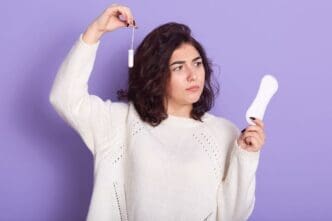Concerns about the safety of menstrual products, such as tampons, have intensified following recent findings of heavy metals in these products. This raises questions about their potential health impacts.
Heavy metals like lead and cadmium are known for their harmful effects. Their presence in tampons has sparked discussions on whether regular use poses significant health risks. Could this contamination affect reproductive health over time?
Understanding Heavy Metal Contamination
Recent studies have identified trace amounts of heavy metals, including arsenic, cadmium, and lead, in some tampon brands across the U.S. and the U.K. This discovery has heightened public concern over the potential risks associated with these contaminants. Heavy metals are not entirely unfamiliar in the context of industrial pollution, but their presence in products used intimately and frequently raises unique health considerations.
The Route of Contamination
Heavy metals can enter tampons through several pathways, including raw material contamination and manufacturing processes. These metals are often found naturally in the environment and can make their way into cotton fields from which tampons are made.
Exposure to heavy metals over time can accumulate in the body, leading to possible toxic effects. Studies suggest continuous exposure could disrupt endocrine functions, a vital area of concern especially for products used internally like tampons.
Health Impact of Heavy Metals
Exposure to heavy metals is associated with several health issues, including hormonal disruptions. For menstruating individuals, long-term exposure to even trace amounts could potentially impact reproductive health.
A systematic review by experts reveals that menstrual products may harbor chemicals capable of endocrine disruption. This underscores the importance of monitoring and regulating the chemical safety of such products.
For consumers, the decision to switch to alternatives like organic products arises partly from these safety concerns. Organic tampons claim to offer a lower risk of chemical exposure.
Organic Tampons: A Safer Choice?
Organic tampons are made from organically grown cotton, free from synthetic chemicals and pesticides. They are perceived to be safer alternatives due to the reduced likelihood of heavy metal contamination.
While organic options are gaining popularity, it is crucial to assess their claims critically. Even organic products are not entirely exempt from trace contaminants, though they might be present in lower concentrations.
Regulatory Measures and Testing
Regulatory bodies are increasingly scrutinizing menstrual products to ensure safety. Current regulations require rigorous testing for chemical components, yet inconsistencies in testing methods can lead to varying results.
As awareness grows, regulatory standards are evolving to address these concerns more comprehensively. However, consumers should remain informed and proactive in choosing safe products.
Environmental Considerations
The environmental impact of tampon production is significant, with cotton farming contributing heavily to pollution. This adds another layer of complexity to the safety discussions surrounding menstrual products.
Efforts are being made to improve the sustainability of both conventional and organic tampons. This includes reducing chemical usage and enhancing biodegradable options.
Individuals can contribute to sustainability by opting for eco-friendly brands and properly disposing of used products. Consumer awareness and demand for greener products drive industry changes.
Expert Opinions
Experts like Dr. Anna Pollack emphasize the need for continued research into the chemical composition of menstrual products.
Professionals advocate for greater transparency in manufacturing processes. Consumer education also plays a crucial role in making informed choices about menstrual health.
Moving forward, collaborative efforts from scientists, regulators, and industry players are essential to ensure the safety of tampons and similar products.
What Should Consumers Do?
Consumers are encouraged to stay informed about the latest research and be vigilant about their product choices. Opting for reputable brands that adhere to rigorous safety standards is advisable.
Regularly reviewing product safety updates and ingredient lists helps consumers make safer choices. Education can empower consumers in protecting their reproductive health.
The Broader Implications
The issue of toxic metals in tampons highlights broader concerns about product safety and consumer health. It underscores the need for ongoing research and monitoring.
Addressing these concerns requires a multifaceted approach, involving stricter regulatory frameworks and informed consumer practices. The conversation around tampon safety continues to evolve.
While concerns about heavy metals in tampons are valid, informed choices and regulatory improvements can mitigate risks. Consumers must stay informed to protect their health.








